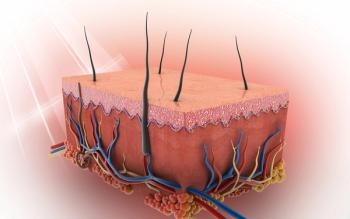
Estrogen May Play Role in Melanoma Recurrence
A large cohort study shows that women on antiestrogen therapy have a lower risk of melanoma. In a study of 7360 women diagnosed with breast cancer between 1980 and 2005, 54% were given supplemental antiestrogen therapy. The rate of cutaneous melanoma was 60% higher for those women not taking antiestrogen supplements compared with the expected rate of melanoma incidence based on age and other factors.
A large cohort study shows that women on antiestrogen therapy have a lower risk of melanoma. In a study of 7,360 women diagnosed with breast cancer between 1980 and 2005, 54% were given supplemental antiestrogen therapy. The rate of cutaneous melanoma was 60% higher for those women not taking antiestrogen supplements compared with the expected rate of melanoma incidence based on age and other factors. The results were published in the January 2012 issue of Cancer Prevention Research, a journal of the American Association for Cancer Research.
Human melanoma. Magnification x130.
The women on antiestrogen therapy had similar risk as the general female population of similar age. A total of 34 cases of melanoma were recorded during the follow up period, a median of seven years.
Study Rationale
Men and women exhibit different age patterns of melanoma incidence. Women are mainly diagnosed during their reproductive years, between puberty and the onset of menopause, and have a better prognosis that is not completely explained by differences in the biology of the melanoma and stage at diagnosis.
Melanoma and benign nevi have been shown to express estrogen-binding receptors, and sex hormones can be associated with increased melanocyte proliferation, which is associated with early-stage melanoma. Both of these observations suggest a link between sex hormones and melanoma development.
Christine Bouchardy, of the Institute for Social and Preventive Medicine at the University of Geneva, and colleagues decided to study women with breast cancer because these patients often taken antiestrogen supplements providing a unique opportunity to observe the role of hormone levels for melanoma development. As adjuvant treatment, women with breast cancer are often given selective estrogen-receptor modulators such as tamoxifen or aromatase inhibitors, which thwart the nonovarian production of estrogen.
The patient population was extracted from the Geneva Cancer Registry which contains detailed information on outcomes and patient characteristics. A major difference between women on antiestrogen therapy compared to those not taking any antiestrogen treatment is age. Those women taking antiestrogen supplements were significantly older, 63.7 years of age, on average, compared to 59.8 years among the women not on treatment.
Previous studies showed a link between breast cancer and secondary development of melanoma, generally attributed to lifestyle and genetic risk factors, and to better medical surveillance among women previously diagnosed with breast cancer, but these studies did not evaluate the role of antiestrogen therapy.
The observed increased risk of secondary melanoma in breast cancer patients needs to be followed up with a prospective study to tease out whether antiestrogen supplementation plays a role only in secondary melanoma prevention or whether there is also a potential preventive effect in the general population.
Newsletter
Stay up to date on recent advances in the multidisciplinary approach to cancer.


















































































